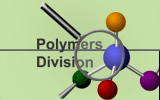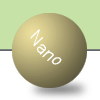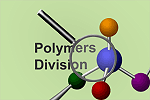Dissolution Fundamentals
|
| |
Introduction
|
 |
| |
 At 65 nm node on-line in 2007, LER must be < 1.5 nm
Dissolution effectively controls LER
Interdependent processing steps many experimental methods
Extent of developer penetration? Interplay between swelling
and dissolution
Developer: Influence of ionization?
Additives: Source of modified film properties?
At 65 nm node on-line in 2007, LER must be < 1.5 nm
Dissolution effectively controls LER
Interdependent processing steps many experimental methods
Extent of developer penetration? Interplay between swelling
and dissolution
Developer: Influence of ionization?
Additives: Source of modified film properties?
|
| |
Experimental Approach
|

|
| Photoresists Ionize: Charge effects |

|
| |
| Quartz Crystal Microbalance: Mass Transport |


|
| |
| Neutron and X-ray Reflectivity: Depth profile |
Dry solid films
•Protection profile (NR)
•Mass density profile (XR)
Liquid Immersed films
•Water profile (NR)
•Aqueous base profile (NR)
|



|
| |
Results: Towards Improved Dissolution Models
|
 |
| Dissolution and Swelling: Kinetics |

|
157 nm material shows different dissolution behavior
Either swells or swells and dissolves; make affect LER
Function of developer strength, but not salt concentration
|
| |
| Aqueous Base Profile: Neutron Reflectivity |

|
First direct measurement of base profile
Broad solid-liquid interface early stages of development
Diffuse counterion profile at free surface
TMA concentration enhanced with base concentration
|
| |
| :Line-Edge Roughness: Bilayer Model |


|
Reflectivity highlights developer effects on LER
Poor LER (74 Å) and CD control for swelling solvent
Broad solubility switch, unacceptable
Swelling expected only butanol
|
| |
NIST Contributors
|
 |
Vivek M. Prabhu*
Eric K. Lin
Wen-li Wu
Erin L. Jablonski
Bryan D. Vogt
Christopher L. Soles
Ronald L. Jones
David vanderHart
Michael Wang
Sushil Satija
|
| |
Collaborators:
|
 |
Dario L. Goldfarb(1) , Marie Angelopoulos (1), Hiroshi Ito
(2)
(1) IBM T. J. Watson Research Center, Yorktown Heights, NY
(2) IBM Almaden Research Center, San Jose, CA

|
| |
| |
| |
| |
| |
| |
| |
| |












